雅楽の調べが響く厳かな境内、白無垢や紋付袴に身を包んだ新郎新婦が、ゆっくりと参道を進む。多くの人が心に描く、日本の美しい結婚式の風景ではないでしょうか。これは「神前結婚式」と呼ばれる、神社で行われる伝統的な挙式スタイルです。ただ形式に則って進められるだけでなく、その一つ一つの儀式には、二人の門出を祝い、末永い幸せを願う深い意味が込められています。
- 家と家を結ぶ、日本古来の考え方: 神前式は、新郎新婦二人だけのものではありません。二つの家族が結びつき、新たな親族となることを重んじる、日本の伝統的な価値観が色濃く反映されています。
- 三三九度に込められた「固めの盃」の意味: 式のハイライトとも言える三三九度。単にお神酒(おみき)を飲む儀式ではなく、夫婦の永遠の契りを固めるための、古来からの神聖な儀式です。
- 神様への誓い「誓詞奏上」の重み: 新郎新婦が神様の前で、自らの言葉で誓いを読み上げる「誓詞奏上」。これは、二人の決意を神前にて確かに示す、最も厳粛で重要な瞬間の一つです。
神社の杜に響く誓い 神前結婚式とは
神前結婚式(しんぜんけっこんしき)とは、神社の神殿にて、神道の神々に結婚を報告し、二人の末永い幸せを祈願する日本独自の挙式スタイルです。その歴史は古くからあるように思われがちですが、現在のような形式が一般に広まったのは、実は明治時代以降のことです。
1900年(明治33年)、後の大正天皇であられる皇太子明仁親王と九条節子妃(貞明皇后)のご婚儀が、宮中三殿で行われました。このご成婚を記念して、日比谷大神宮(現在の東京大神宮)が一般の人に向けた神前結婚式を創設したのが始まりとされています。以来、家と家の結びつきを大切にする日本の文化に根差し、神聖な誓いの形として全国に広まっていきました。
一つ一つの儀式に込められた願い 式の流れ
神前結婚式は、地域や神社によって多少の違いはありますが、おおむね決まった流れに沿って執り行われます。ここでは代表的な儀式の流れとその意味をご紹介します。
- 参進の儀(さんしんのぎ): 神職と巫女に導かれ、新郎新婦、そして両家の親族が列になって本殿まで進む儀式。雅楽が奏でられる中、神様の待つ場所へ向かう神聖な行列です。
- 修祓の儀(しゅばつのぎ): 挙式の前に、神職が祓詞(はらえことば)を述べ、大麻(おおぬさ)を振ることで、心身の罪や穢れを清めます。
- 祝詞奏上(のりとそうじょう): 神職が神様に対し、二人が結婚したことを報告し、今後のご加護を願う祝詞を読み上げます。
- 三三九度(さんさんくど): 「三献の儀」とも呼ばれる、神前式の象徴的な儀式。新郎新婦が三つの盃で交互にお神酒を酌み交わし、夫婦の永遠の契りを結びます。
- 誓詞奏上(せいしそうじょう): 新郎新婦が神前に進み、二人で築き上げていく家庭の誓いを読み上げます。
- 玉串奉奠(たまぐしほうてん): 玉串(榊の枝に紙垂をつけたもの)に自らの心を乗せ、神様に捧げる儀式です。
この他にも、指輪の交換や親族盃の儀などが行われ、厳かな雰囲気の中で二人の門出が祝われます。
盃を交わすことの深い意味 三三九度の儀
神前結婚式の中でも、特に印象深いのが「三三九度」ではないでしょうか。これは単なる形式的な乾杯とは全く異なります。
小・中・大の三つの盃を使い、それぞれ新郎から新婦へ、新婦から新郎へと、三口でお神酒をいただきます。一の盃は「過去」への感謝とご先祖様への敬意、二の盃は「現在」の二人が力を合わせること、三の盃は「未来」の安泰と子孫繁栄への願いが込められているなど、諸説あります。
数字の「三」は日本では古くから縁起の良い陽数とされ、「九」はその最大の陽数です。この縁起の良い数字を重ねることで、夫婦の絆が永遠に固く結ばれるようにという願いが込められているのです。静寂の中、盃を交わす所作の一つ一つが、二人の誓いをより深いものにしていきます。
時代を超えて受け継がれる誓いの形
神前結婚式は、神職によるお清めから始まり、神様への結婚の報告、そして夫婦の契りを固める三三九度、自らの言葉で誓う誓詞奏上、そして神様への感謝を捧げる玉串奉奠といった、意味深い儀式で構成されています。
元々は親族のみが参列するのが一般的でしたが、現在では友人の参列を認める神社も増えています。時代と共に少しずつ形を変えながらも、神前結婚式は、二人の人生の始まりを神聖な場所で誓う、日本ならではの美しい伝統として大切に受け継がれています。
解説ポイント①:家と家を結ぶ、日本古来の考え方
神前結婚式が他の挙式スタイルと大きく異なる点の一つに、「家」という概念の重視が挙げられます。式の流れに含まれる**「親族盃の儀(しんぞくはいのぎ)」**は、その象徴です。これは、両家の親族全員がお神酒をいただく儀式で、これにより「今日から私たちは親族です」ということを全員で確認し合います。
これは、結婚を個人同士の契約と捉えるだけでなく、二つの家族が結びつき、新たな関係性を築くという日本古来の価値観を反映したものです。新郎新婦の門出を家族全員で祝い、今後の末永いお付き合いを誓う。この共同体意識こそが、神前結婚式の根底に流れる大切な精神なのです。
解説ポイント②:三三九度に込められた「固めの盃」の意味
三三九度は、神前式の核心とも言える儀式です。この儀式には、複数の解釈があり、そのどれもが夫婦の幸せを願うものです。
- 数字の持つ力: 1、3、5、7、9といった奇数は「陽数」と呼ばれ、日本では縁起が良いとされてきました。三三九度は、この陽数の中でも特にめでたい「3」と、その最大数である「9」を組み合わせた、この上なく縁起の良い儀式です。
- 三つの盃の意味: 小・中・大の三つの盃は、それぞれ天・地・人を表すという説があります。天の神、地の神、そして人の代表であるご先祖様への感謝を示し、そのご加護を願うという意味です。
- 飲む回数の意味: 一つの盃から三回に分けて飲むことにも意味があります。一口目は神様へ、二口目は家族へ、三口目はゲストへの感謝を表すとも言われています。
これらの意味を知ることで、新郎新婦が盃を交わす一瞬一瞬が、いかに重く、そして祝福に満ちたものであるかが理解できるでしょう。
解説ポイント③:神様への誓い「誓詞奏上」の重み
「誓詞奏上(せいしそうじょう)」は、神前結婚式において、新郎新婦が主体となる最も重要な場面です。神職が読み上げる祝詞が「神様から二人への言葉」であるのに対し、誓詞は**「二人から神様への約束の言葉」**です。
一般的には新郎が代表して読み上げますが、新郎新婦二人で読み上げる形式もあります。その内容は、「お互いを敬い、助け合い、苦楽を共にして家庭を築いていく」といった、これからの夫婦生活の指針となるものです。自らの声で、神聖な神殿に誓いの言葉を響かせることで、その言葉は単なる文章ではなく、神様と、そして自分たち自身との、決して破ることのできない約束として心に刻まれるのです。
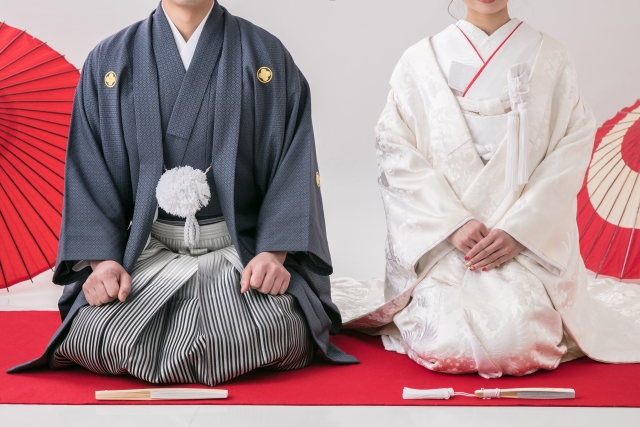
参考文献
- 神前式とは?費用の相場、式の流れ、魅力や注意点を解説|ゼクシィ
- 神前式とは?式の流れや費用、魅力について解説!|マイナビウエディング
- 神前式の流れと意味を徹底解説!【専門家監修】|ハナユメ
- 東京大神宮|神前結婚式
【English Article】
The Sacred Vow: A Guide to Shinto Wedding Ceremonies in Japan
In a solemn shrine precinct where the melodies of gagaku court music resonate, a bride and groom, dressed in a white shiromuku and a formal montsuki hakama, proceed slowly down the main path. This is a beautiful image of a Japanese wedding that many people might envision. This traditional ceremony style, held at a Shinto shrine, is known as a Shinto wedding or Shinzen-shiki. It is not merely a formal procedure; each ritual is imbued with profound meaning to celebrate the couple’s new beginning and to pray for their everlasting happiness.
- A Japanese Concept: Uniting Two Families: A Shinto wedding is not just for the bride and groom. It strongly reflects the traditional Japanese value of emphasizing the union of two families, who become new relatives.
- The Nuptial Pledge of “San-san-kudo”: The “san-san-kudo” ceremony, arguably the highlight of the wedding, is more than just a ritual of drinking sake. It is a sacred, ancient rite to solidify the couple’s eternal bond.
- The Weight of the Vow to the Gods, “Seishi-sojo”: The “seishi-sojo” is a moment where the bride and groom read their vows aloud before the gods (kami). It is one of the most solemn and crucial moments, confirming their commitment to the divine.
A Vow Resonating in the Shrine’s Forest: What is a Shinto Wedding?
A Shinto wedding (Shinzen-shiki) is a uniquely Japanese wedding style where the couple reports their marriage to the Shinto gods in the main hall of a shrine and prays for their everlasting happiness. While it may seem like an ancient tradition, the form as we know it today became widespread after the Meiji era (1868-1912).
The tradition began in 1900, when the wedding of Crown Prince Akihito (later Emperor Taisho) and Princess Kujo Sadako (later Empress Teimei) was held at the Three Palace Sanctuaries. To commemorate this marriage, Hibiya Daijingu (now Tokyo Daijingu) established a wedding ceremony for the general public. Since then, rooted in the Japanese culture that values the bond between families, it has spread throughout the country as a sacred form of pledging one’s vows.
The Flow of the Ceremony: Wishes Woven into Each Ritual
While there may be slight variations depending on the region and the shrine, a Shinto wedding generally follows a set order. Here is an introduction to the typical flow of the ceremony and the meaning behind each ritual.
- Sanshin-no-gi (参進の儀): The wedding procession. Led by a Shinto priest and shrine maidens (miko), the bride, groom, and their families walk in a line to the main shrine building. It is a sacred procession towards the place where the gods await, accompanied by gagaku music.
- Shubatsu-no-gi (修祓の儀): The purification rite. Before the ceremony, the priest purifies the minds and bodies of the participants from sins and impurities by reciting purification prayers and waving a large ritual wand called an onusa.
- Norito-sojo (祝詞奏上): The recitation of nuptial prayers. The priest reports the couple’s marriage to the gods and recites a prayer for their future protection and blessing.
- San-san-kudo (三三九度): Also known as the “three-times-three exchange of nuptial cups,” this is the symbolic ritual of a Shinto wedding. The bride and groom alternately sip sacred sake (omiki) from three different-sized cups, sealing their eternal marital bond.
- Seishi-sojo (誓詞奏上): The reading of the wedding vows. The bride and groom step forward before the altar and read aloud their vows for the family they will build together.
- Tamagushi-hoten (玉串奉奠): The offering of the tamagushi branch. This is a ritual where the couple offers a sacred branch of the Sakaki tree, with their hearts and prayers attached, to the gods.
In addition, rituals like the exchanging of rings and a sake-sharing ceremony among relatives take place, celebrating the couple’s union in a solemn atmosphere.
The Profound Meaning of Exchanging Cups: The San-san-kudo Rite
Perhaps the most memorable part of a Shinto wedding is the san-san-kudo. This is completely different from a simple toast.
Using three cups—small, medium, and large—the sake is sipped three times from each cup, with the groom and bride taking turns. There are various interpretations, but one holds that the first cup expresses gratitude for the past and respect for ancestors, the second represents the couple’s commitment to work together in the present, and the third contains prayers for a secure future and the prosperity of their descendants.
The number three has long been considered a lucky “yang” number in Japan, and “nine” is its highest form. By repeating these auspicious numbers, the ritual embodies the wish for the couple’s bond to be forever strong. In the quiet hall, each gesture of exchanging the cups deepens the couple’s vows.
A Form of Vow Passed Down Through the Ages
A Shinto wedding is composed of meaningful rituals, from purification by a priest, reporting the marriage to the gods, the vow-solidifying san-san-kudo, reading the vows in one’s own words, and offering gratitude to the gods through the tamagushi offering.
Originally, it was common for only family members to attend, but today, an increasing number of shrines permit friends to be present. While changing slightly with the times, the Shinto wedding is carefully preserved as a beautiful and unique Japanese tradition of pledging the start of a new life in a sacred place.
Analysis Point ①: A Japanese Concept: Uniting Two Families
One of the major differences between Shinto weddings and other ceremony styles is the emphasis on the concept of “family” (ie). The “Shinzoku-hai-no-gi” (親族盃の儀), or the ritual of the relatives’ cup, is a symbol of this. In this rite, all relatives from both families drink a cup of sake, confirming that “from this day forward, we are one family.”
This reflects a traditional Japanese value that views marriage not just as a contract between two individuals, but as a union of two families, creating a new and wider kinship. The entire family celebrates the couple’s new beginning and pledges to maintain a long and prosperous relationship. This sense of community is a fundamental spirit underlying the Shinto wedding.
Analysis Point ②: The Nuptial Pledge of “San-san-kudo”
The san-san-kudo is the core ritual of a Shinto wedding. It has multiple interpretations, all of which wish for the couple’s happiness.
- The Power of Numbers: Odd numbers like 1, 3, 5, 7, and 9 are called “yang numbers” and are considered auspicious in Japan. The san-san-kudo combines the especially joyful number “3” with its ultimate form, “9,” making it an exceptionally fortunate ritual.
- The Meaning of the Three Cups: One theory suggests that the small, medium, and large cups represent Heaven, Earth, and Humanity, respectively. It signifies gratitude and prayers for blessings from the gods of heaven, the gods of the earth, and the ancestors who represent humanity.
- The Meaning of the Sips: The act of sipping three times from one cup also has meaning. It is sometimes said that the first sip is for the gods, the second for family, and the third for the guests, expressing gratitude to each.
Understanding these meanings reveals how each moment of the couple’s exchange of cups is profoundly significant and filled with blessings.
Analysis Point ③: The Weight of the Vow to the Gods, “Seishi-sojo”
The “Seishi-sojo” (誓詞奏上) is the most important scene in a Shinto wedding where the bride and groom take center stage. While the norito prayers recited by the priest are “words from the gods to the couple,” the seishi (vows) are “words of promise from the couple to the gods.”
Typically, the groom reads the vows on behalf of the couple, but there are also formats where both read them together. The content outlines the couple’s guiding principles for their future life together, such as “to respect and help each other, and to build a home together through joys and sorrows.” By reciting these words with their own voices in the sacred shrine, the text becomes more than just sentences; it is engraved in their hearts as an unbreakable promise to the gods and to each other.




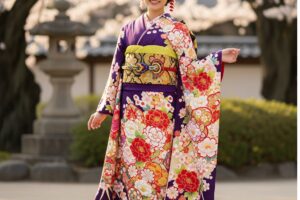

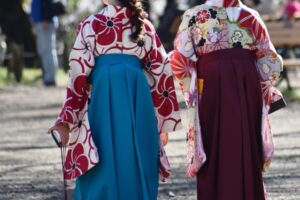
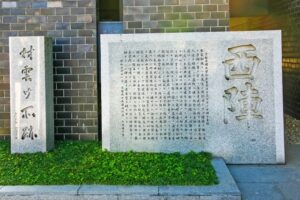
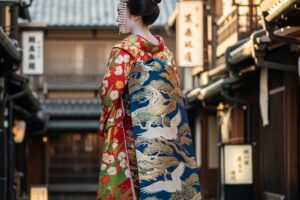
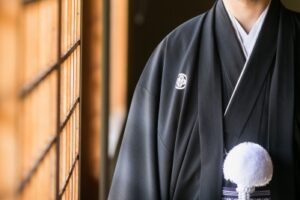
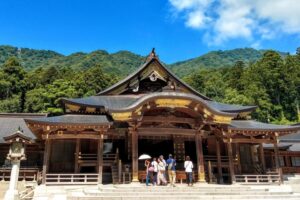
コメントを残す